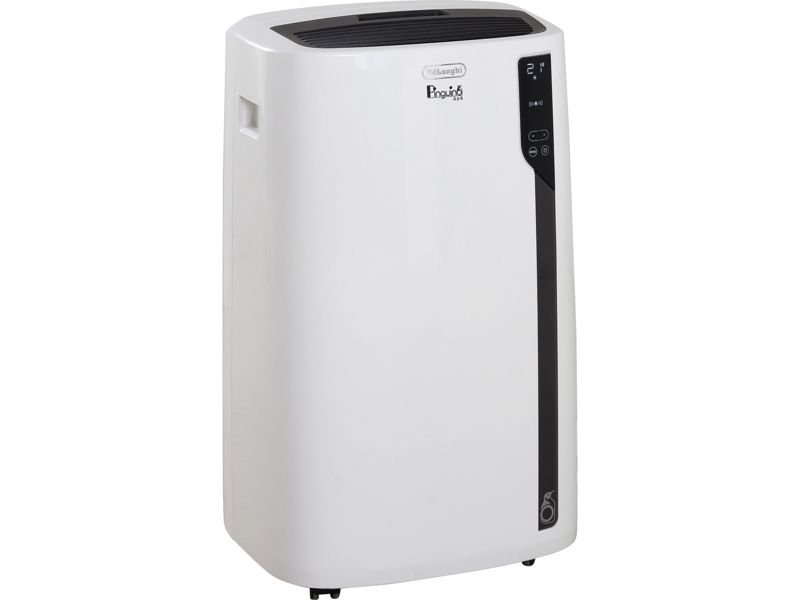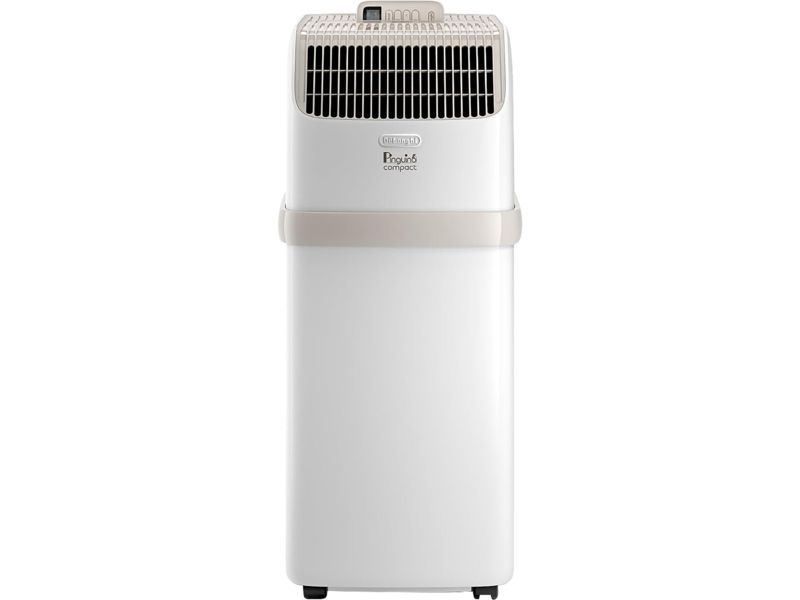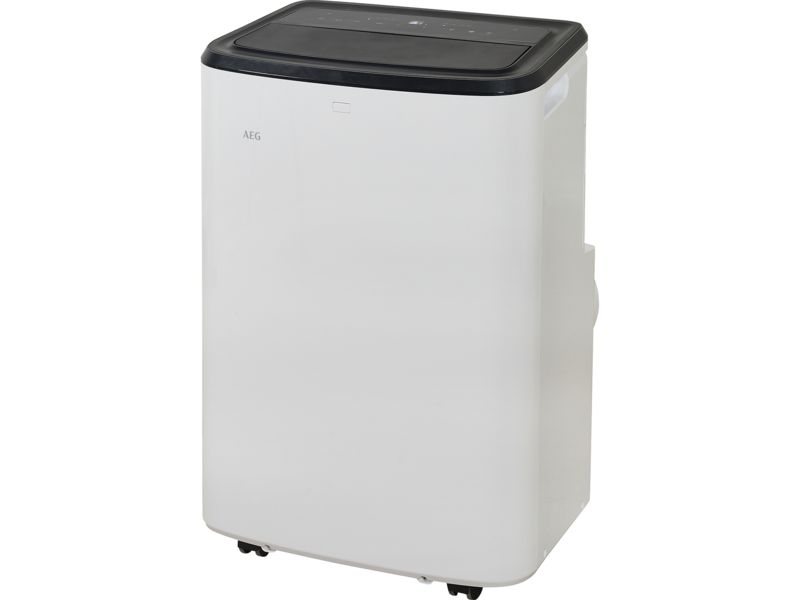By clicking a retailer link you consent to third-party cookies that track your onward journey. If you make a purchase, Which? will receive an affiliate commission, which supports our mission to be the UK's consumer champion.
How we test air conditioners

In this article
- Why our air conditioner tests are different
- What are Which? Best Buy portable air conditioners?
- How is the Which? score calculated?
- Our key portable air conditioner testing criteria
- What else do we check?
- Are there any security issues?
- Pick the perfect portable air conditioner with Which? reviews
On a swelteringly hot day, the last thing you want is to turn on your air conditioner only to be met with a vague waft rather than a refreshing breeze. Our in-depth tests uncover the best portable air conditioners that will keep you cool and comfortable.
Read on to find out exactly how we identify the best air conditioners from big-name brands. Or head straight to our air conditioner reviews.
Why our air conditioner tests are different
Many free-to-access websites review air conditioners using just one tester, with scores generated based on that individual's preferences. These sites may also receive air conditioners free of charge, directly from manufacturers.
Which? air conditioner tests are different. Our test scores are based on measurements and ratings supplied by a full team of experts at our lab, ensuring there's no room for unconscious bias when giving an overall rating.
We also buy every air conditioner unit that we test and don't accept free samples from PR companies or manufacturers.
What are Which? Best Buy portable air conditioners?
Which? Best Buy air conditioners score highly in our tests for the features that matter the most – how quickly they cool a room, airflow distribution and ease of use.
To become a Which? Best Buy, an air conditioner must achieve a total score of 75% or higher.
How is the Which? score calculated?
The overall Which? score for each portable air conditioner is shown as a percentage.
We only take into account the results of our tests, ignoring price completely. As a result, all of the air conditioners passing through our lab are tested on the same scale, making it easier for you to compare models on your shortlist.
Every air conditioner is tested in exactly the same way, to uncover the truth behind manufacturers' claims.
- Performance (45%)
- Ease of use (25%)
- Airflow distribution (20%)
- Accuracy of cooling power claims (5%)
- Noise (5%)
Our key portable air conditioner testing criteria
Below are the key testing categories and how we evaluate each one:
Performance
The most important function of an air conditioner is getting your room (and you) to a comfortable temperature quickly.
To see how long you'll need to wait for your air conditioner to have a noticeable effect, we measure the time taken for the room temperature to drop by 10ºC.
Each air conditioner is placed in a room at 35ºC, then set to its minimum temperature setting. The fan is set to maximum speed and 'swing' movement, with our test stopping once the temperature in the room drops to a more comfortable 25ºC.
We also measure temperature distribution, to see whether there are cold or hot spots in the room.
Energy efficiency is another key consideration, so we look at the energy required to cool our test environment by 10ºC.
How quickly and effectively an air conditioner cools a room makes up 45% of the total test score.
Airflow speed distribution
You don't want to be subjected to a gale-force blast in one corner of the room, while the air barely moves in another corner, so airflow distribution is important in determining whether or not an air conditioner is worthy of being a Which? Best Buy.
We test this separately to temperature distribution, which is included under our overall performance score.
We measure airflow distribution at a range of points across the room, to see whether there are big variations.
Airflow distribution makes up 20% of the total test score for an air conditioner.
Ease of use
Three lab experts compare notes to help us determine how easy an air conditioner is to get to grips with and use on an ongoing basis.
First, we look at the instructions that come bundled with the machine. We assess whether they are clear and concise, and whether they offer information on product safety, maintenance and warranty.
Next comes ease of use. We check to see whether the air conditioner's parts fit well together and whether or not you can reduce the window gap.
The window gap is the space between the open window's frame and the windowsill. Portable air cons have a hose that needs to hang out of an open window. But that makes them inefficient, as warm air can come in through the same window.
Some machines we've tested solve this issue using a window seal – this is usually a rectangular piece of plastic that can slot into that gap.
When present, we test how often the water container needs to be drained or if the filter needs swapping out. Bundled remote controls are also put to the test.
Ease of use makes up 25% of the total test score for an air conditioner.
Accuracy of cooling efficiency claims
To make sure manufacturers are delivering on their promises to customers, we look at how closely each air conditioner matches its claimed Energy Efficiency Ratio (EER), which is an indicator of how energy efficient an air conditioner will be.
Accuracy of cooling efficiency claims makes up 5% of the total test score for an air conditioner.
Noise
Ideally, you want an air conditioner that does its job without sounding like a plane about to take off.
To determine how noisy an air conditioner is, we record the acoustic pressure of the appliance (in decibels) at its lowest and highest settings. Portable air conditioners are naturally noisy appliances, though, so even models that score well for quietness are reasonably loud.
All of the measurements are collected in our acoustic reverberation room.
Noise makes up 5% of the total test score for an air conditioner.
Best air conditioners: see our top scorers and what to look for when buying an air conditioner
What else do we check?
We also check a series of other features for every portable air conditioner passing through our test lab.
Although some air conditioner features aren't factored into our final test score, they could still prove useful when it comes to buying. Our team of experts note down:
- The number of fan speeds Having lots of options here is a bonus.
- Any extra settings This could include turbo, sleep, auto, silent and economy modes.
- Whether there is a remote control included To let you control your machine without getting up off the sofa.
- Dimensions We check the weight of the air conditioner with all of its attachments and measure to see how much space it takes up.
- Accessories These could come in the form of a hose, fitting material, maintenance products or filters.
- Whether it has wheels Pick an air conditioning unit with wheels and you can easily move it from one room to another.
- Whether there is a digital display This can provide additional information on room temperature and fan settings.
For portable air conditioners that can be controlled with a smartphone app, we also check to see how secure it is.
Are there any security issues?
Your connected air conditioner might sound like a random device for a hacker to want to target.
But smart appliances can collect plenty of personal data about you, which could be used to build a detailed picture of your daily routine: when you’re typically in and out of the house, for example.
They could be controlled by an attacker, say an angry ex-partner, who changes the settings to confuse and distress you.
They could act as an entry point to your entire home internet network, potentially compromising other devices such as laptops and smartphones.
They could even be weaponised – used as part of an army of botnets to carry out a large-scale attack on another organisation by flooding that organisation with requests.
We put every smart air conditioner we test through a full privacy and security test programme, to check for security loopholes that hackers could exploit. The air conditioners that we recommend had nothing that worried us at time of testing.
Data encryption
Encryption of your data means that it’s scrambled and can’t be read by others.
We check that your personal data is encrypted.
We also check where it’s going, particularly if that’s outside of the EEA (European Economic Area).
Firmware
Out-of-date or ill-maintained firmware (the software programmed into the hardware of the air conditioner) could create gaps which a hacker could use to access your air conditioner.
Data transparency (permissions)
We check what data the app is asking to access: for example, your location, or access to your camera. And we check the reasons behind it, to make sure everything you’re giving away really is needed and that the app isn’t simply collecting ‘rainy day data’ just for the sake of it.
Password policy
We assess whether air conditioners have strong password policies, or weak ones that allow you to use easily guessable passwords.
Although it’s less common now than it used to be, some connected devices might still allow basic passwords such as ‘password’ or ‘1234’. Or they might have a default password, such as ‘admin’, and won’t force you to change this.
If this is the case, we’ll highlight this in our reviews and provide advice on how to set a good password.
Decommissioning
Our test looks at how easy it is to reset the product and wipe all of your data when it’s time to get rid of your smart air conditioner. If you’re selling your air conditioner on to someone else – which, from an environmental perspective, is much better than getting rid of it – then you’ll want to be sure none of your data is still attached to it.
Man-in-the-middle attacks
This is when a hacker snoops on information passing to and from your air conditioner. We check if every smart air conditioner that goes through our lab tests is vulnerable to this kind of attack.
Other types of attack
Threats posed by cybercriminals are constantly evolving. We’ll be updating our test programme as necessary as new threats emerge.
While it’s impossible for us to guarantee that any smart device is 100% secure, we do check for the most common vulnerabilities and alert manufacturers to any significant issues.
Save money and energy with our guide on how to keep cool without air conditioning
Pick the perfect portable air conditioner with Which? reviews
As you can see from the graph below, there's a significant difference in test score between our highest-scoring and lowest-scoring air conditioners.
Without checking our expert reviews, you risk buying an air conditioner that simply isn't good enough. Our low-scoring models are let down by confusing manuals, pitiful fans and poor airflow distribution.
Air conditioners: Which? test scores compared
- Lowest test score: 48%
- Average test score: 62%
- Highest test score: 83%
Data correct as of June 2024. Air conditioners that score 75% or higher qualify as Which? Best Buys.
Browse our full selection of air conditioner reviews to find one that will beat the heat, even on the most blistering summer days.






















